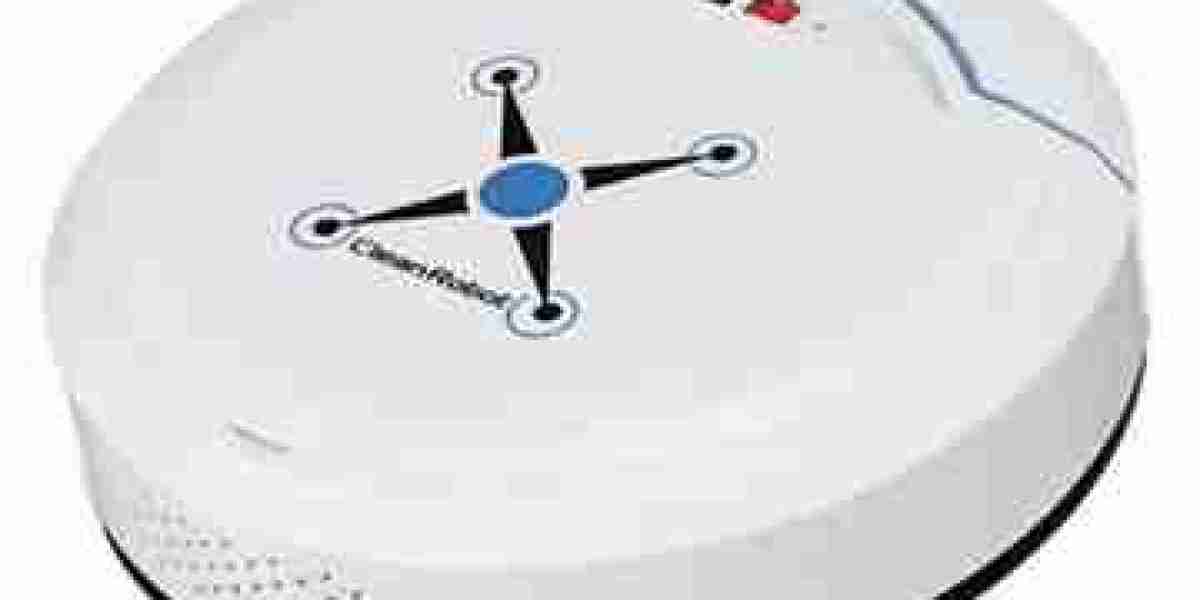In today’s technology-driven world, household chores are becoming easier and more efficient, thanks to the rapid development of smart home devices. One of the latest innovations transforming the cleaning industry is the robotic window cleaner. Designed to save time, improve safety, and deliver sparkling clean results, these smart gadgets are changing the way we think about window cleaning—both at home and in commercial spaces.
What Is a Robotic Window Cleaner?
A robotic window cleaner is a compact, motorized device that attaches to glass surfaces and cleans them automatically. Using suction, magnets, or a combination of both, these robots stick to windows—whether vertical, horizontal, or slanted—and move in a programmed pattern to clean the entire surface.
These devices are equipped with microfiber pads or cleaning brushes, motors for movement, sensors to detect edges, and sometimes even spray nozzles for applying cleaning solution. They are particularly useful for large windows, high-rise buildings, and hard-to-reach areas where manual cleaning is either inconvenient or dangerous.
How Do Robotic Window Cleaners Work?
Robotic window cleaners rely on several integrated technologies to operate effectively:
1. Attachment Mechanism
Most robots use a vacuum motor to create suction, allowing them to cling to glass surfaces. Some models use strong magnets, especially those designed for cleaning both sides of the window at the same time.
2. Cleaning Components
Microfiber pads or rotating brushes are used to scrub away dirt, dust, and grime. Some devices come with built-in tanks and sprayers that apply a cleaning solution as they move.
3. Smart Navigation
Advanced models include AI-based navigation systems that allow the robot to plan an efficient cleaning path. Sensors help detect the edges of the window, avoid obstacles, and ensure complete coverage without missing spots.
4. Remote or App Control
Most robotic window cleaners can be controlled via a remote control or a smartphone app. Users can start, stop, pause, or schedule cleaning tasks easily, even when they are not at home.
5. Power Supply
Robots can be powered either by rechargeable batteries or plugged-in cords. Many also include a backup battery to keep the robot attached in case of power failure.
Key Features to Look For
When shopping for a robotic window cleaner, consider the following features:
Suction Power: Strong suction ensures the robot stays attached and cleans effectively.
Battery Life or Power Cord: Choose a model that suits your cleaning needs and window size.
Safety Features: Anti-fall sensors, tether cords, and emergency power backups are essential for safety.
Cleaning Speed and Efficiency: Check how fast the robot can clean and how well it navigates.
Versatility: Some models can also clean tiles, mirrors, and other smooth surfaces.
Noise Level: Quieter models are preferable for use in homes and offices.
Smart App Integration: Allows for easier operation and scheduling via mobile devices.
Advantages of Robotic Window Cleaners
There are many benefits to using a robotic window cleaner, especially for people looking for convenient and efficient cleaning solutions.
1. Time-Saving
Window cleaning is a time-consuming task, especially in buildings with many or large windows. A robotic cleaner can handle the task while you focus on other activities.
2. Increased Safety
Manual window cleaning can be risky, especially for upper-story windows. Robotic cleaners reduce the need for ladders or leaning out of windows, significantly increasing safety.
3. Better Cleaning Results
Robots follow a consistent cleaning pattern and apply even pressure, reducing streaks and missed spots. The result is often cleaner and more polished windows than manual cleaning.
4. Ideal for Hard-to-Reach Areas
Robotic cleaners are perfect for areas that are difficult to access manually, such as high windows, skylights, or the exterior glass of high-rise apartments.
5. Accessibility
For elderly individuals or people with mobility issues, robotic window cleaners make it easy to maintain clean windows without the physical strain of traditional methods.
Common Applications
Robotic window cleaners are used in a variety of settings:
1. Homes
Homeowners with large windows, glass doors, or sunrooms find robotic cleaners especially helpful for keeping glass clear with minimal effort.
2. Apartments and High-Rises
Cleaning the exterior of windows in tall apartment buildings can be extremely difficult and dangerous. A robotic cleaner is a safe alternative.
3. Offices
Office buildings with large glass facades benefit from robotic cleaners for maintaining a professional appearance.
4. Hotels and Restaurants
Clean windows are crucial in the hospitality industry. Robotic window cleaners help maintain a spotless environment for guests and customers.
5. Retail Stores and Malls
Glass storefronts and display windows need to be clean and inviting. Robotic cleaners help achieve that without constant manual effort.
Limitations and Considerations
While robotic window cleaners offer many benefits, there are a few limitations to be aware of:
Cost: High-quality robotic window cleaners can be expensive.
Size Restrictions: Some models may not work well on very small or oddly shaped windows.
Initial Setup: Some preparation is required, including placing the robot correctly and ensuring it is connected or charged.
Weather Sensitivity: Outdoor cleaning is limited to dry weather unless the model is specifically designed for outdoor use.
Maintenance: Pads need to be cleaned or replaced regularly, and the device may need occasional software updates or troubleshooting.
The Future of Robotic Window Cleaning
As technology continues to evolve, robotic window cleaners are expected to become more intelligent, more efficient, and more affordable. Future innovations may include:
Self-Charging Robots: Devices that automatically return to their docking stations when cleaning is done or the battery is low.
AI-Powered Learning: Smarter navigation systems that learn your window layout for faster and better cleaning.
Drones for Exterior Windows: Some companies are already developing drone-based window cleaners for large commercial buildings.
Eco-Friendly Models: New designs that use less water, energy, and harsh chemicals.
Voice Command Integration: Compatibility with smart home assistants like Amazon Alexa or Google Assistant.
Conclusion
Robotic window cleaners are a perfect example of how smart technology can make everyday life easier. They offer a practical, safe, and effective way to keep windows clean—especially in homes and buildings where traditional cleaning is inconvenient or unsafe. As these devices become more advanced and accessible, they’re likely to become a standard part of modern cleaning routines.
Whether you’re a homeowner, business owner, or building manager, investing in a robotic window cleaner can save time, enhance safety, and deliver consistently great results with minimal effort.








